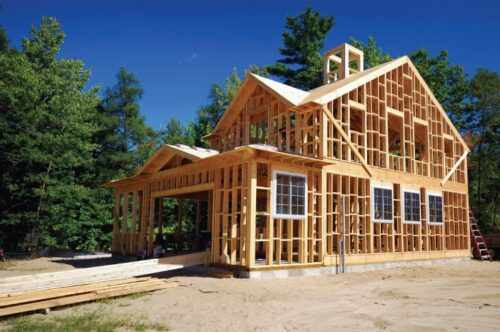HOUSE CONSTRUCTION PROCEDURE (STEP BY STEP)
House Construction Procedure (Step By Step)
Building a house is a significant endeavor that requires careful planning, precise execution, and adherence to various construction phases. Each step in the house construction procedure plays a crucial role in ensuring the final structure’s safety, functionality, and aesthetic appeal. Below, we outline the key stages involved in the house construction process.
1. Site Preparation and Foundation
The first step in house construction is preparing the site and laying the foundation. This involves clearing the land, leveling the ground, and excavating as necessary. The foundation provides the building’s base, ensuring stability and preventing settling. There are various types of foundations, including slab-on-grade, crawl space, and full basement, each with its benefits and considerations.
2. Framing and Structural Elements
Once the foundation is in place, the framing process begins. This phase involves constructing the skeletal structure of the house, including walls, floors, and the roof framework. Builders use a combination of wood, steel, or engineered materials to create a sturdy frame. This is a critical phase that sets the layout and shape of the house.
3. Plumbing and Electrical Rough-In
With the framing complete, the next step involves installing the rough plumbing and electrical systems. Plumbers lay out pipes for water supply and drainage, while electricians set up the wiring and boxes for outlets, switches, and lighting fixtures. It’s essential to plan these systems carefully to ensure functionality and compliance with safety codes.
4. Insulation and HVAC Installation
Insulation is added to the walls, roof, and floors to regulate the indoor temperature and improve energy efficiency. Meanwhile, the Heating, Ventilation, and Air Conditioning (HVAC) system is installed to provide heating and cooling throughout the house. Proper insulation and HVAC installation contribute to a comfortable living environment.
5. Interior Finishes
During this phase, the interior of the house begins to take shape. Drywall is hung and finished, creating the walls. Flooring materials such as hardwood, tile, carpet, or laminate are installed. Interior doors, trim, and molding are also added, giving the house its distinct character.
6. Exterior Finishes
While the interior finishes are being applied, the exterior of the house is also worked on. Siding, brickwork, stucco, or other chosen materials are applied to the exterior walls. The roof is shingled or finished according to the design. Exterior painting or finishing touches are completed, enhancing the house’s curb appeal.
7. Cabinetry and Fixtures
In the kitchen and bathrooms, cabinetry, countertops, and fixtures are installed. This includes fitting sinks, faucets, showers, bathtubs, and toilets. In the kitchen, appliances such as stoves, refrigerators, and dishwashers are integrated.
8. Final Touches
As the construction nears completion, final touches are added both inside and outside the house. These include applying interior paint, installing light fixtures, and ensuring that all systems are functioning correctly. Landscaping is carried out to enhance the surroundings and create an inviting outdoor space.
9. Quality Checks and Inspections
Before the house is deemed ready for occupancy, thorough quality checks and inspections are conducted. These inspections cover various aspects, including structural integrity, electrical systems, plumbing, and overall safety. Any necessary adjustments or corrections are made at this stage.
10. Final Walkthrough and Handover
Once all inspections are passed and any issues are resolved, a final walkthrough is conducted with the homeowner. This allows the homeowner to review the finished house and identify any concerns or additional requests. Upon mutual satisfaction, the house is handed over to the homeowner, and ownership is transferred.
Building a house is a step-by-step process that involves a collaborative effort between architects, engineers, contractors, and various skilled workers. Each phase contributes to creating a safe, functional, and aesthetically pleasing home for the occupants. By following these key steps and ensuring attention to detail, a successful house construction project can be achieved.


